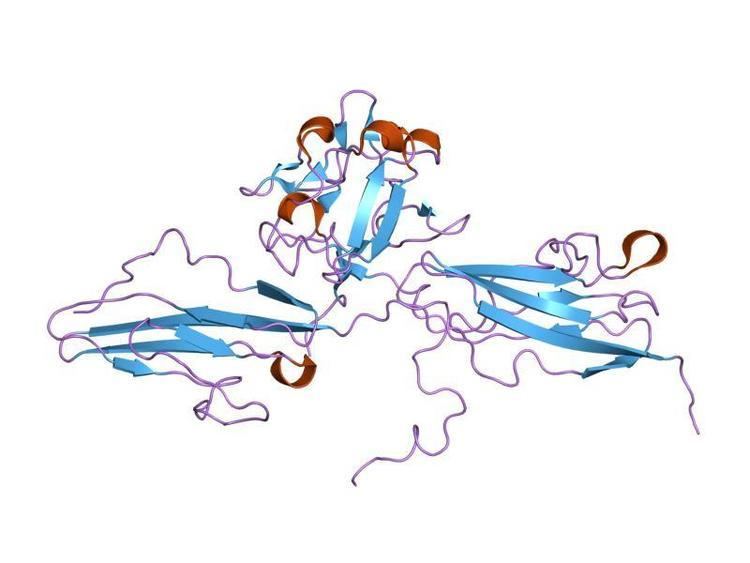Entrez 2261 | Ensembl ENSG00000068078 | |
 | ||
External IDs MGI: 95524 HomoloGene: 55437 GeneCards: FGFR3 | ||
Fibroblast growth factor receptor 3 is a protein that in humans is encoded by the FGFR3 gene. FGFR3 has also been designated as CD333 (cluster of differentiation 333). The gene is located on chromosome 4q16.3 is "expressed in tissues such as the cartilage, brain, intestine, and kidneys."
Contents
Function
The protein encoded by this gene is a member of the fibroblast growth factor receptor family, where amino acid sequence is highly conserved between members and throughout evolution. FGFR family members differ from one another in their ligand affinities and tissue distribution. A full-length representative protein would consist of an extracellular region, composed of three immunoglobulin-like domains, a single hydrophobic membrane-spanning segment and a cytoplasmic tyrosine kinase domain. The extracellular portion of the protein interacts with fibroblast growth factors, setting in motion a cascade of downstream signals which ultimately influencing cell mitogenesis and differentiation.
This particular family member binds both acidic and basic fibroblast growth factor and plays a role in bone development and maintenance. Alternative splicing occurs and additional variants have been described, including those utilizing alternate exon 8 rather than 9, but their full-length nature has not been determined.
Mutations
Mutations in this gene can develop dysfunctional proteins "impede cartilage growth and development and affect chondrocyte proliferation and calcification" which can lead to craniosynostosis and multiple types of skeletal dysplasia (Osteochondrodysplasia). The point mutation in the FGFR3 gene causes hydrogen bonds to form between two arginine side chains leading to ligand-independent stabilization FGFR3 dimers. Point mutations in the FGFR3 gene, “causes defective growth of long tubular bones”. By inhibiting chondrocyte proliferation, FGFR3 restricts long bone length. In achondroplasia, the FGFR3 gene has a point mutation at nucleotide 1138 resulting from either a G>A or G>C. FGFR3 mutations are linked with spermatocytic summons, which occur more frequently in older men.
Disease linkage
Defects in the FGFR3 gene has been associated with several conditions, including:
Interactions
Fibroblast growth factor receptor 3 has been shown to interact with FGF1 and FGF9.
